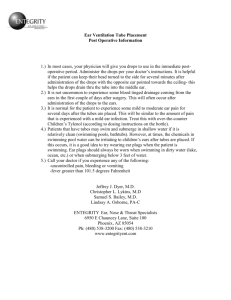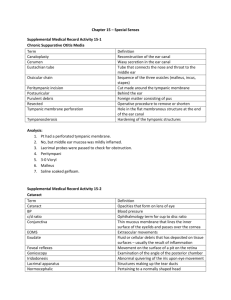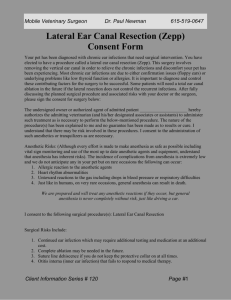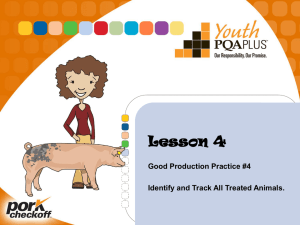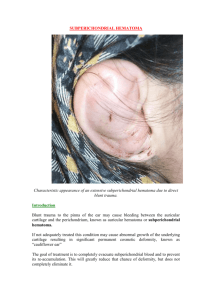EXAMPLE - Acusis
advertisement
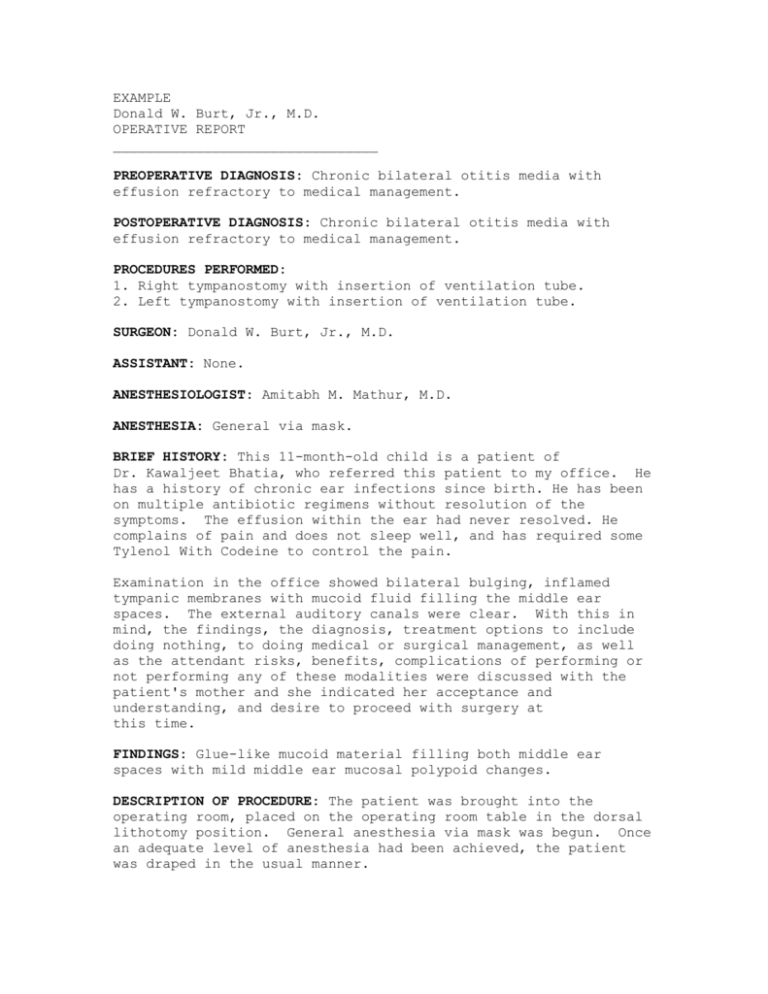
EXAMPLE Donald W. Burt, Jr., M.D. OPERATIVE REPORT ________________________________ PREOPERATIVE DIAGNOSIS: Chronic bilateral otitis media with effusion refractory to medical management. POSTOPERATIVE DIAGNOSIS: Chronic bilateral otitis media with effusion refractory to medical management. PROCEDURES PERFORMED: 1. Right tympanostomy with insertion of ventilation tube. 2. Left tympanostomy with insertion of ventilation tube. SURGEON: Donald W. Burt, Jr., M.D. ASSISTANT: None. ANESTHESIOLOGIST: Amitabh M. Mathur, M.D. ANESTHESIA: General via mask. BRIEF HISTORY: This 11-month-old child is a patient of Dr. Kawaljeet Bhatia, who referred this patient to my office. He has a history of chronic ear infections since birth. He has been on multiple antibiotic regimens without resolution of the symptoms. The effusion within the ear had never resolved. He complains of pain and does not sleep well, and has required some Tylenol With Codeine to control the pain. Examination in the office showed bilateral bulging, inflamed tympanic membranes with mucoid fluid filling the middle ear spaces. The external auditory canals were clear. With this in mind, the findings, the diagnosis, treatment options to include doing nothing, to doing medical or surgical management, as well as the attendant risks, benefits, complications of performing or not performing any of these modalities were discussed with the patient's mother and she indicated her acceptance and understanding, and desire to proceed with surgery at this time. FINDINGS: Glue-like mucoid material filling both middle ear spaces with mild middle ear mucosal polypoid changes. DESCRIPTION OF PROCEDURE: The patient was brought into the operating room, placed on the operating room table in the dorsal lithotomy position. General anesthesia via mask was begun. Once an adequate level of anesthesia had been achieved, the patient was draped in the usual manner. The operating microscope was then brought into the field and an ear speculum placed into the left ear canal, while the head was gently rotated to the right. Cerumen was then removed from the external auditory canal. The tympanic membrane was noted to be intact and bulging. An incision was made in the anteriorinferior quadrant and thick mucoid glue-like material was suctioned from the middle ear space. The middle ear mucosa appeared mildly polypoid throughout. An Armstrong ventilation tube was inserted in the incision and placement was found to be good. The ear speculum was then removed. The patient was approached from the opposite side of the table and his head gently rotated to the left. Again, an ear speculum placed and using the microscope, cerumen was removed from the external auditory canal. The tympanic membrane was noted to be bulging. An incision was made in the anterior-inferior quadrant and a large amount of thick glue-like mucoid material was suctioned from the middle ear space. The middle ear mucosa appeared mildly polypoid throughout. An Armstrong ventilation tube was inserted in the incision and placement was found to be good. The ear speculum was then removed. The patient was then allowed to awaken and taken to the post anesthesia care unit in satisfactory condition. CLOSURE: None. ESTIMATED BLOOD LOSS: None. COMPLICATIONS: None. DRAINS AND PACKS: Bilateral Armstrong ventilation tubes. NEEDLE AND SPONGE COUNT: None used.

